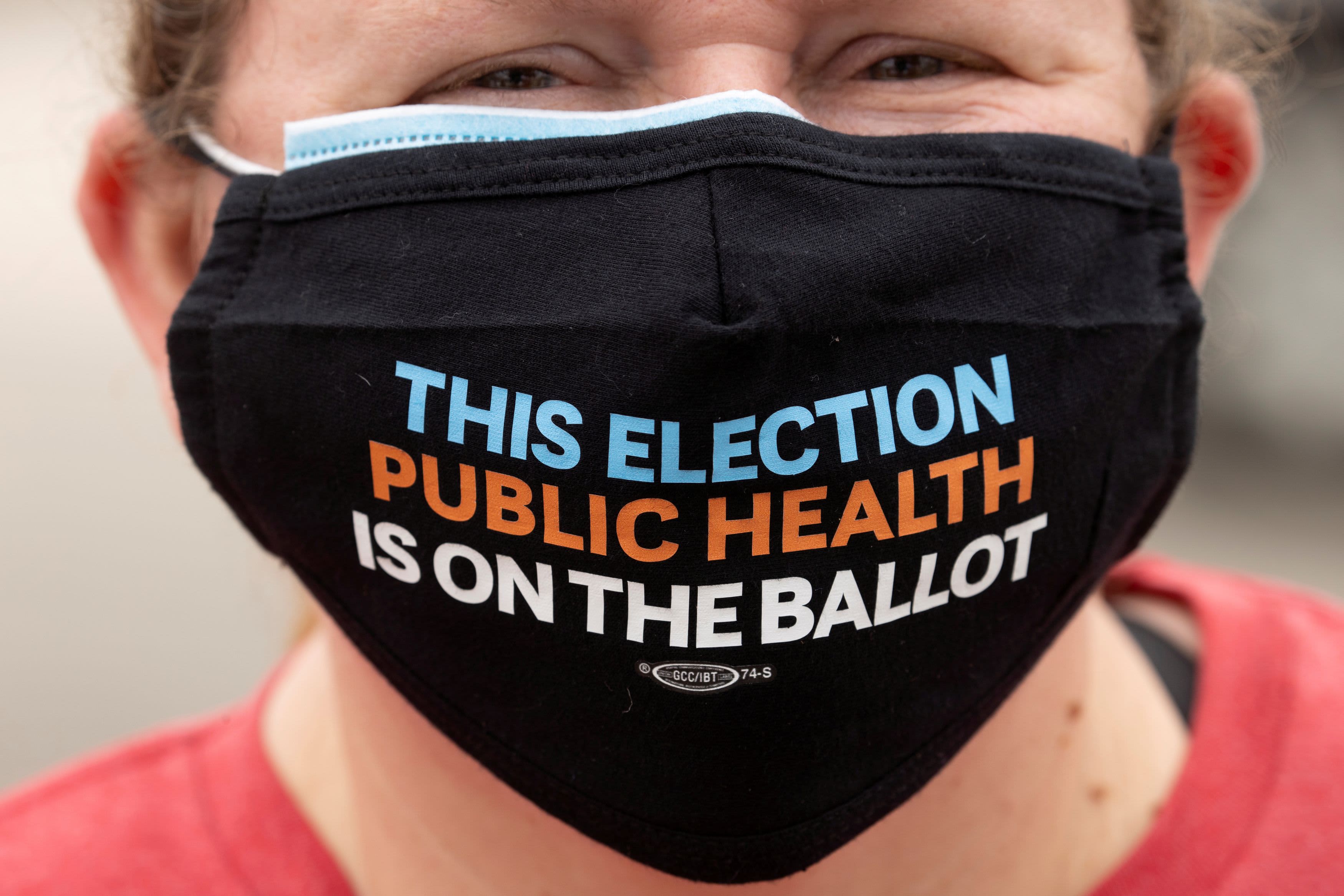
The debate over how and where to educate students, from preschool to university, has been among the fiercest fought throughout the pandemic. Nearly every solution presents challenges for parents, students and teachers alike.
The Covid-19 crisis and an ongoing nationwide shortage of qualified teachers have created a perfect storm in the education system that may only worsen in the months to come.
Educators such as Cynthia Robles are feeling it firsthand.
Robles is a special education teacher at Roger Williams Middle School in Providence, Rhode Island, with more than two decades of experience. She is currently working in school, doing both in-person and remote learning, while helping to cover other classes during unassigned periods to make up for a lack of substitute teachers in the district.
“It’s truly a challenge every day. Teaching is challenging anyway, but with the lack of teachers in some rooms, and the rest of us having to kind of pick up the slack. … It’s exhausting. Honestly, it’s even heartbreaking,” Robles, a union member, said. “You sit back and you really look at these children. And you end the day with, ‘Did I give them everything they need?'”
The district is currently short some 100 teachers and could use an additional 100 to fill substitute needs, Providence Teachers Union President Maribeth Calabro said.
Educators are being forced to make tough decisions about their own health and safety, and that of their family members, simply by going to work.
Data from the American Federation of Teachers, the national labor union, shows that 1 in 3 teachers say the pandemic has made them more likely to retire earlier than planned, particularly among those over age 50 and with more than 20 years’ tenure. The American Enterprise Institute projected that more than 18% of all public and private school teachers are in the 65 and older age group that is most vulnerable to the virus.
“When we have widespread possibility of illness, people who may take off for longer periods of time and we don’t have anyone to fill that opening, it has a domino effect,” Calabro said.
Providence Public Schools said it recently revamped its hiring practices to recruit external candidates for open teaching positions earlier in the hiring cycle, adding this school year began with fewer vacancies than years past. It maintains that extra precautions, including daily cleaning, additional custodial staff, face coverings and fresh air solutions were all put into place ahead of schools reopening. But more help is needed to accommodate in-person and virtual learning needs.
“The district anticipates a greater need for substitute teachers during the pandemic, not only due to teachers who may get sick with Covid-19, but also due to teachers who may be placed under precautionary quarantine after exposure to a Covid-19 carrier,” public affairs director Laura Hart said in a statement, adding that Rhode Island is grappling with a need for ESL and STEM teachers.
“Filling teacher and substitute positions is challenging under normal conditions,” Hart said. “Recruitment for educators to work in brick-and-mortar classrooms has been made more challenging during the pandemic.”
A nationwide issue
The shortage of teachers is being felt far beyond just Rhode Island. The Economic Policy Institute reports that, as of September, public K-12 education employment is more than half a million jobs below its year-ago levels, and 890,000 below where it would have to be to keep up with growth in student enrollment since 2008. About half of those roles are teachers; others include counselors, teaching assistants, roles in special education, food service and more.
Covid-related strains on state and local budgets may only worsen the issue moving ahead.
“We are seeing federal policymakers not extend enhanced unemployment benefits,” said Elise Gould, senior economist at EPI, noting the stalemate in Washington, D.C., over Covid-related aid. “Where will they have the money to shore up their K-12 education system? Education is often on the chopping block when looking at state and local government budgets.”
Pressure to reopen schools this fall came from all sides — from some parents who needed the ability to return to work, all the way to the White House — which has created what AFT President Randi Weingarten called a “brain drain.”
Progress on alleviating the teacher shortage that had been made has been erased, Weingarten said, and now a lack of substitutes is worsening the issue. While teachers may want to be in school with their students, many have had to make personal and “agonizing” decisions in this challenging time.
“It’s the uncertainty and unpredictability that has created a huge, at least immediate, crisis and shortage,” she said. “I just don’t know what that looks like in six months to a year.”
With the school year underway, Robles, the special education teacher, said one of the most challenging parts of the job has been not only trying to best serve students but also keep her family safe. For now, Robles said, she isn’t visiting her elderly mother out of an abundance of caution as she’s exposed to both students and teachers in the school.
“At the end of the day, we’re scared, too, you know. We are also having to go home to our families. … It’s difficult,” Robles said.




